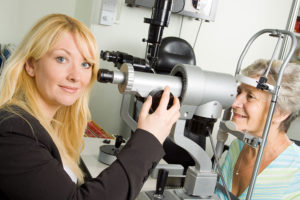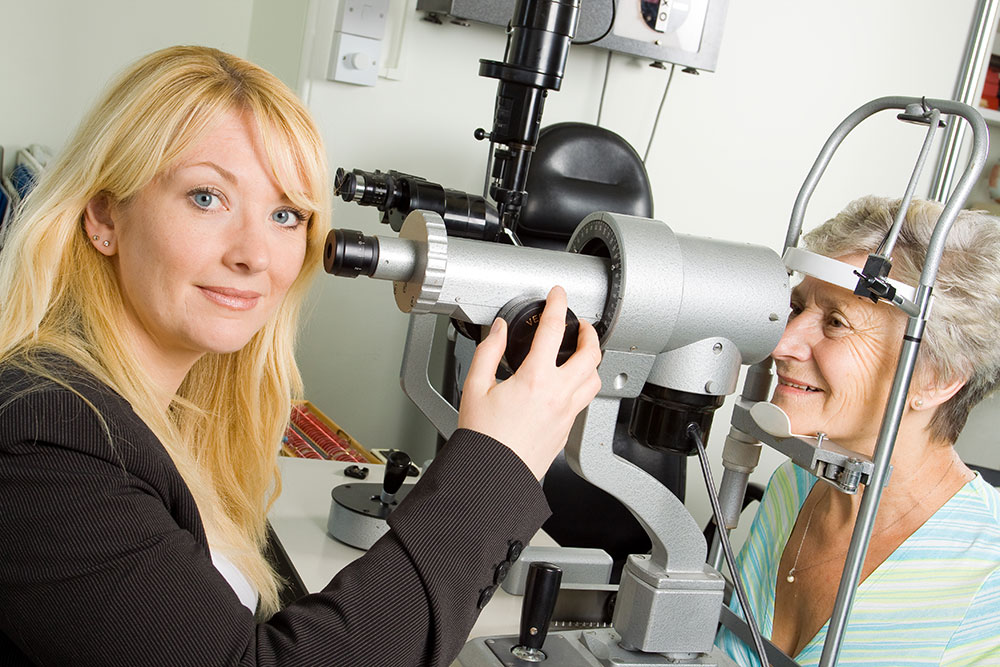Disclaimer: The information on our website is provided for general information purposes only. We make no representations or warranties of any kind, express or implied, about the completeness, accuracy, reliability, suitability or availability with respect to the website or the information contained on our website for any purpose. Any reliance on such information is therefore strictly at your own risk and we are not liable for any damages or losses arising out of or resulting from your reliance on any information contained on our website.
An ophthalmic medical technician conducts eye exams, gives eye medications, and educates patients. Additionally, they educate people on how to wear and care for their contacts and eyeglasses. In fact, helping with these tasks frees up an ophthalmologist to see more patients. Next, watch a video to learn about this career field.
How to Become an Ophthalmic Medical Technician

The Joint Commission on Allied Health Personnel in Ophthalmology (or JCAHPO) has four levels of certification you can obtain to become an ophthalmic medical technician. The most entry-level one is the Certified Ophthalmic Assistant (COA). There are various requirements you must meet to sit for the exam. If you do not have work experience, you must be a high school graduate and attend an accredited certification program. If you do have work experience, the amount of work experience you have will impact how much education you need. Education ranges from completing a few distance education courses to completing one self-study course.
Once you are a certified ophthalmic assistant, you can then become a certified ophthalmic technician (COT), then a certified ophthalmic medical technologist (CMOT). If you wish to continue your education and training, you can continue with your education and become specialized in Ophthalmic Surgical Assisting (OSA). You can review more information from the JCAHPO website (link opens in a new tab).
Job Description of an Ophthalmic Medical Technician
Ophthalmic medical technicians help at an ophthalmologist’s office and conduct eye exams such as eye pressure tests and tests to determine an individual’s near and distance vision. They will also obtain and document the patient’s medical history for the ophthalmologist’s reference. These technologists may also apply certain medications as needed. When working with patient’s they may provide additional education to the patient around eye ware care. Most ophthalmic medical technicians work in offices run by an ophthalmologist though a small number do work in surgical hospitals and outpatient care centers.
Ophthalmic Medical Technicians or Technologists Career Video Transcript
When ophthalmic medical technicians or technologists ask to look you in the eye, they really mean it. These professionals assist ophthalmologists (or eye doctors) to provide eye care to patients. Ophthalmic medical technicians and technologists administer eye exams, dispense eye medications, and instruct patients in the care and use of corrective lenses. They take measurements of the eye with highly specialized equipment. Technologists also train and supervise technicians and assistants, take diagnostic images of patients’ eyes, and may assist with minor surgical procedures. Technicians may measure a patient’s current lenses for accuracy.
Working with eyes is delicate work. It takes attention to detail and dexterity. Interpersonal skills are also important, whether comforting an anxious patient or clarifying specifications for lenses. Generally, these skilled professionals work full-time. Both ophthalmic medical technicians and technologists typically earn an ophthalmic technician certificate, earned in 1-2 years at a community college or professional school, then obtain a certification. When these technicians and technologists see eye to eye with their patients, better vision is in sight.
Article Citations
Bureau of Labor Statistics, U.S. Department of Labor, Occupational Outlook Handbook, Ophthalmic Medical Technician.
National Center for O*NET Development. 29-2057.00. O*NET OnLine.
The career video is in the public domain from the U. S. Department of Labor, Employment and Training Administration.

